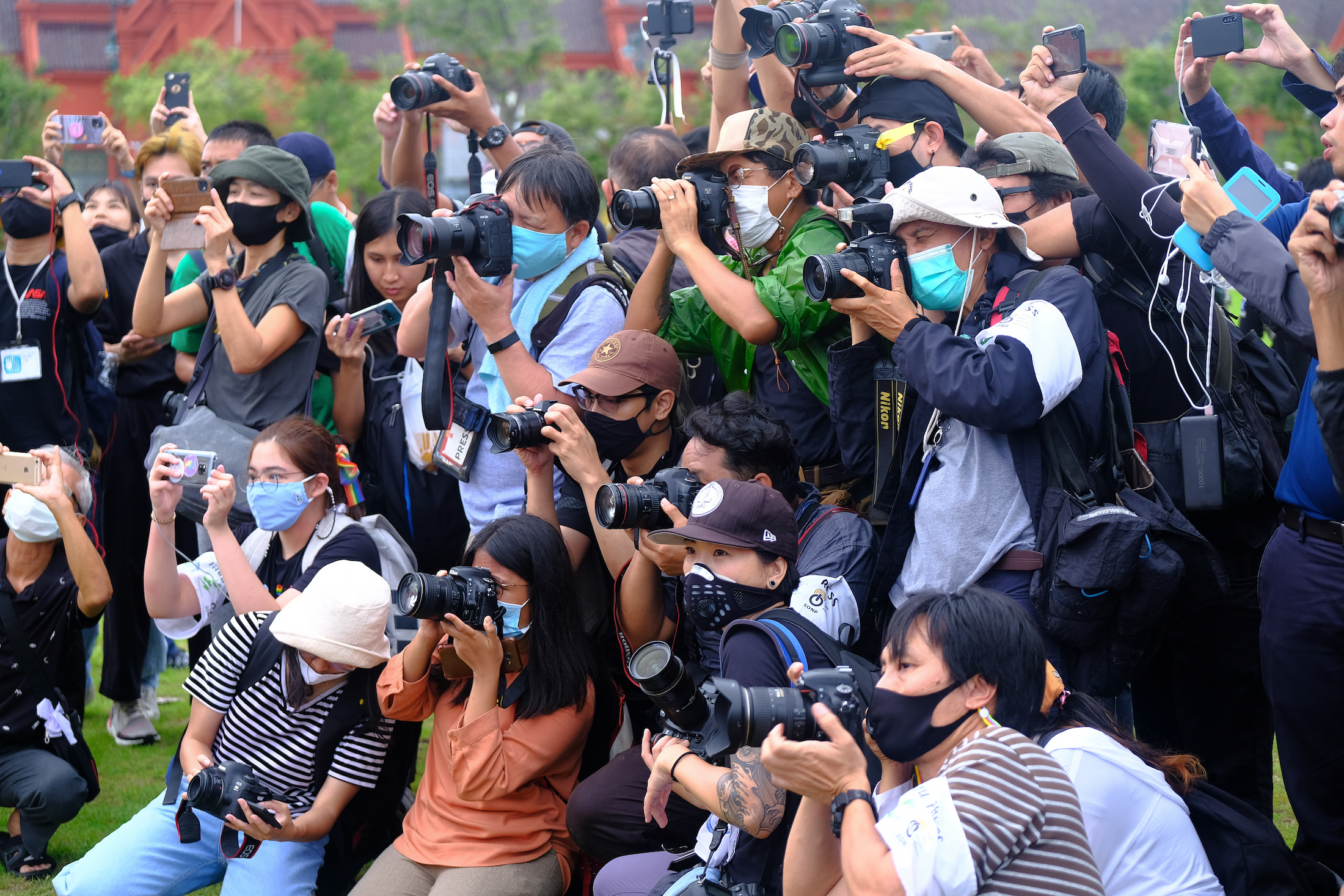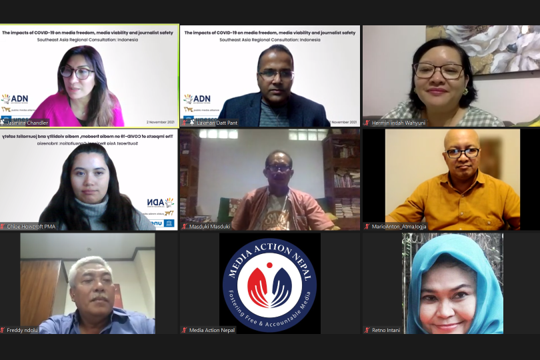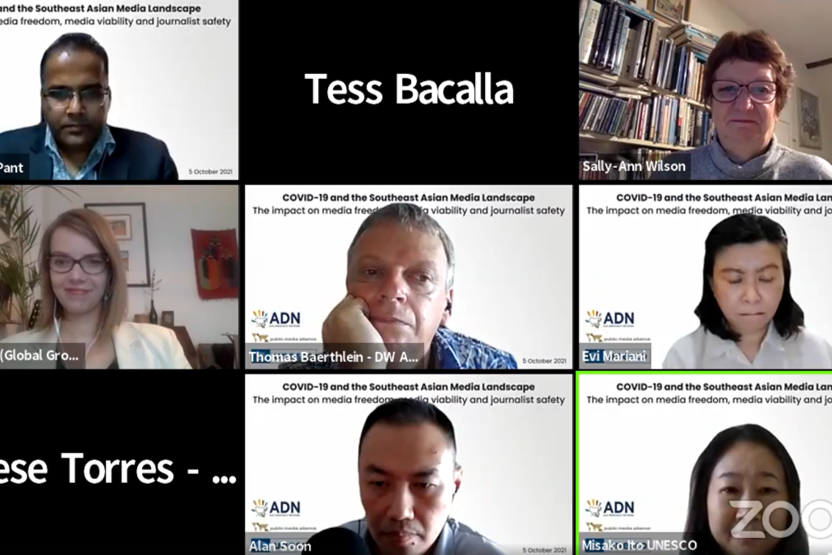Regional collaboration key to maintaining freedom and sustainability of independent media
24 January 2022
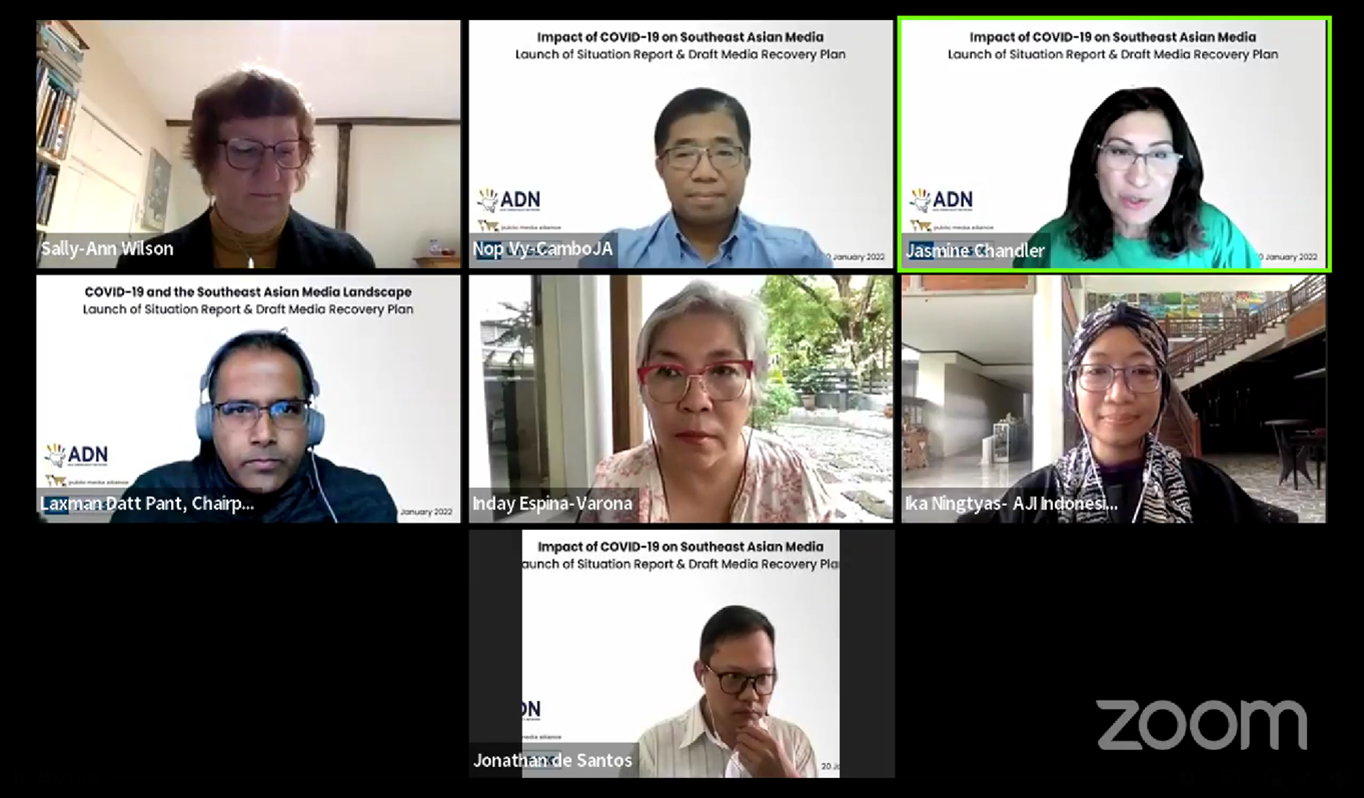
Regional collaboration between independent public interest media organisations has been identified as a key component in fighting back against deteriorating levels of media freedom and increasing threats to journalist safety.
The comments were made during the virtual launch on 20 January of a new report by the Public Media Alliance (PMA) that explores the impacts of Covid-19 on media across Southeast Asia, and an accompanying media recovery plan that responds to these key challenges.
During the launch, keynote speaker, Inday Espina-Varona, Regional Head of Rappler, provided an overview of how the COVID-19 pandemic has amplified ongoing threats to media freedom and the safety of journalists across the region. She emphasised the fact that at the end of 2020, most countries in the region ranked in the lowest percentile of Reporters without Borders’ World Press Freedom Index. She also spoke about the financial pressures that individual journalists and media organisations are facing.
But Inday also highlighted the importance of enhanced regional media collaboration. “The best way to combat disinformation is by creating a landscape and atmosphere where truth-telling is rewarded,” she said, “where truth tellers amplify each other. Beyond rivalries, whether corporate, political, ideological, we need to work together because we are facing what Maria Ressa has called existential threats, not just to our health, but to the very way of life, to democracy, as we know it.”
The sentiment was echoed by fellow speakers, Ika Ningtyas, Secretary-General of the Aliansi Jurnalis Independen, Indonesia; Nop Vy, Founder and Executive Director of the Cambodian Journalists Alliance Association (CamboJA); Jonathan De Santos, Chairperson of the National Union of Journalists, Philippines (NUJP), and Tess Bacalla, project co-facilitator and Project Lead and Editor-in-Chief of the Asia Democracy Chronicles.
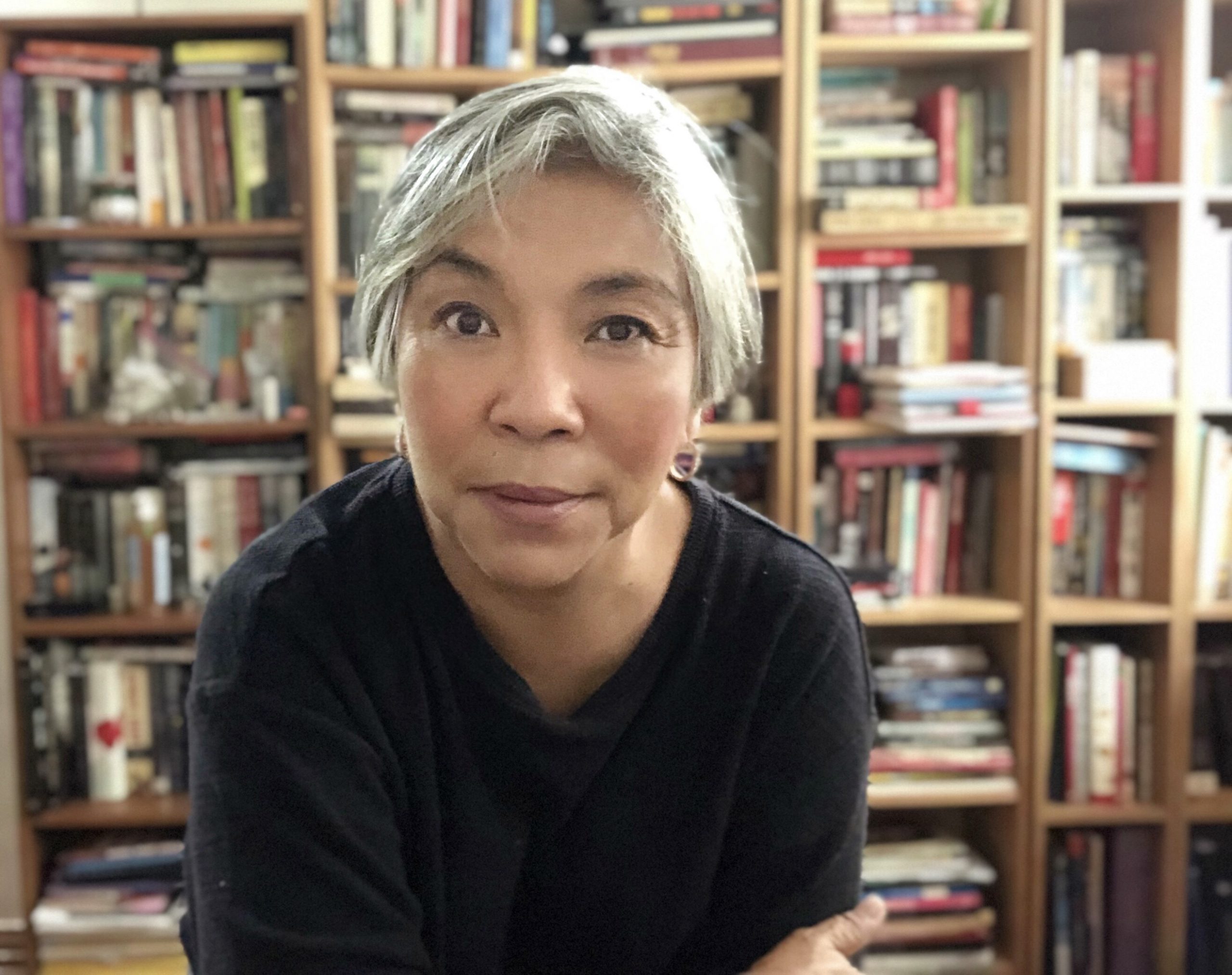
“The best way to combat disinformation is by creating a landscape and atmosphere where truth-telling is rewarded, where truth tellers amplify each other. Beyond rivalries, whether corporate, political, ideological, we need to work together.”
– Inday Espina-Varona, Head of Regions, Rappler
Aside from the major threats imposed on the region’s media by the pandemic, as documented in the report, the moderator, PMA CEO Sally-Ann Wilson, also reminded participants to reflect on the fact that journalism is a valuable profession that underpins democracy. She emphasised: “The one thing that today brings us is hope that people will work together.”
Jonathan De Santos highlighted some of the opportunities the crisis has presented, and the importance of celebrating small victories. He shared that the NUJP was exploring ways of increasing collective bargaining powers, and noted pushbacks being made by journalists and civil society organisations against adverse conditions. The report’s media viability expert, Anrike Visser, also commented that “the future of independent media in Southeast Asia stands or falls with maintaining editorial and financial independence.” Her key recommendation for media organisations striving to maintain the public’s trust is by diversifying revenue streams beyond support from governments, political parties and businesses affiliated with people in power. She added, “COVID-19 has shown the need for a digital transformation and offering products in line with audience demand to build media organisations that stand the test of time.”
“If no one knows the challenges facing media, society will lose the benefit of information as a public good. Together with the PMA report, we can sound the alarm before it’s too late.” – Guy Berger, IPDC Secretary and Director for Policies and Strategies on Communication and Information at UNESCO
A draft media recovery plan was also launched during the event. This includes recommendations on how to better equip journalists, media organisations and the wider media environment with useful and practical ways of responding to the challenges during and beyond COVID-19. These were developed from feedback by the report researchers and during four virtual consultations that took place in November 2021 with PMA members and media stakeholders from across the region.
The recovery plan will be available to download in six Southeast Asian languages (Burmese, Indonesian, Khmer, Malay, Tagalog, and Thai) on the PMA website very soon.
Find out more
In the past seven months, the PMA has worked closely with media stakeholders in Southeast Asia to develop the research report ‘Impact of COVID-19 on media freedom, journalist safety and media viability in Southeast Asia’. The project involved desk-based research, discussions, and feedback with various media stakeholders across the region. These were carried out via regional and in-country virtual consultations, as well as a mapping exercise and questionnaire conducted by PMA.
The project was organised and delivered by the PMA in collaboration with its local partner, the Asia Democracy Network (ADN), and with support from the UNESCO Bangkok Office and the rapid response mechanism of UNESCO’s International Programme for the Development of Communication (IPDC). The key findings and recommendations provided in the report draw from UNESCO tools, such as the Journalists’ Safety Indicators, Media Development Indicators and Media Viability Indicators.
In the report’s foreword, Guy Berger, IPDC Secretary and Director for Policies and Strategies on Communication and Information at UNESCO, wrote: “If no one knows the challenges facing media, society will lose the benefit of information as a public good. Together with the PMA report, we can sound the alarm before it’s too late.”
Project insights and reviews
“Learning from the impacts of COVID-19 on the Southeast Asian (SEA) media and leading the recovery was the key aim of this research. Building connections with key experts and collaborating with organisations in SEA has been one of the most rewarding parts of working on this project. The research recommends a set of enduring, sustainable, and effective standards, solutions and innovations for media viability, media freedom and journalist safety in SEA during and post COVID-19 to facilitate the ability of journalists to work safely and legitimately to promote freedom of expression in the region.” – Jasmine Chandler, Projects and Memberships Manager, PMA
“By analysing the impact of the COVID-19 global health crisis in this region, this research report commendably identifies appropriate solutions tailored to this context. The ideas for a regional recovery plan cover the need for sustainable and effective standards, and for innovative approaches during – and beyond – the COVID-19 crisis.” – Guy Berger, IPDC Secretary and Director for Policies and Strategies on Communication and Information at UNESCO
“Although countries in the region are unique in terms of socio-political systems, the media outlets and journalists across the region have been suppressed, intimidated and harassed by authorities in recent years. The study about the media business viability and media freedom impacts of the COVID-19 pandemic for the Southeast Asia (SEA) media landscape is a timely intervention that alerts stakeholders, including both state and non-state actors, about steps to be taken to improve the media freedom situation in the region.”– Laxman Datt Pant, project co-facilitator and Chairperson, Media Action Nepal
“Without a doubt, further criminalising journalism amid an unprecedented crisis in a region that has, over the last decade, been on a downward path to authoritarianism, has compounded the myriad challenges that confronted the media pre-pandemic. Now more than ever, more coordinated and well-thought-out initiatives are needed if the region is to reclaim its steadily shrinking civic space. This report, along with its proposed regional media recovery plan for media sustainability, is an earnest step in this direction.” – Tess Bacalla, project co-facilitator and Project Lead and Editor-in-Chief, the Asia Democracy Chronicles
“Different cross-cutting safety issues emerged – from the killings and physical attacks, and threats to physical and mental health, to digital security issues, online violence, and restrictive legislative and legal attacks. I have observed… that these appear to have invited more introspection among journalists and advocates of journalist safety, as well as more coordinated efforts among individuals and groups working on this advocacy. Capacity building programmes on journalist safety should be conducted regularly, with sessions customised based on the evolving challenges and the local context and issues. Organisations need to find ways to sustain and strengthen existing safety mechanisms through monitoring and evaluation.”– Therese Patricia S. Torres, Journalist Safety author and Director of the Research, Policy, and Advocacy Unit, the Asian Institute of Journalism and Communication (AIJC)
Related Posts
19th January 2022
Report: Impact of Covid-19 on media in Southeast Asia
A research report into the key impacts…
9th November 2021
Media experts address challenges facing Southeast Asian media landscape
Media experts from across Southeast…
8th October 2021
Media experts discuss the impacts of COVID-19 on the Southeast Asian media landscape
Media experts discuss the impacts of…
29th April 2021
Project: The Impact of COVID-19 on Media Freedom, Media Business Viability and the Safety of Journalists in Southeast Asia
Our new project seeks to identify and…

